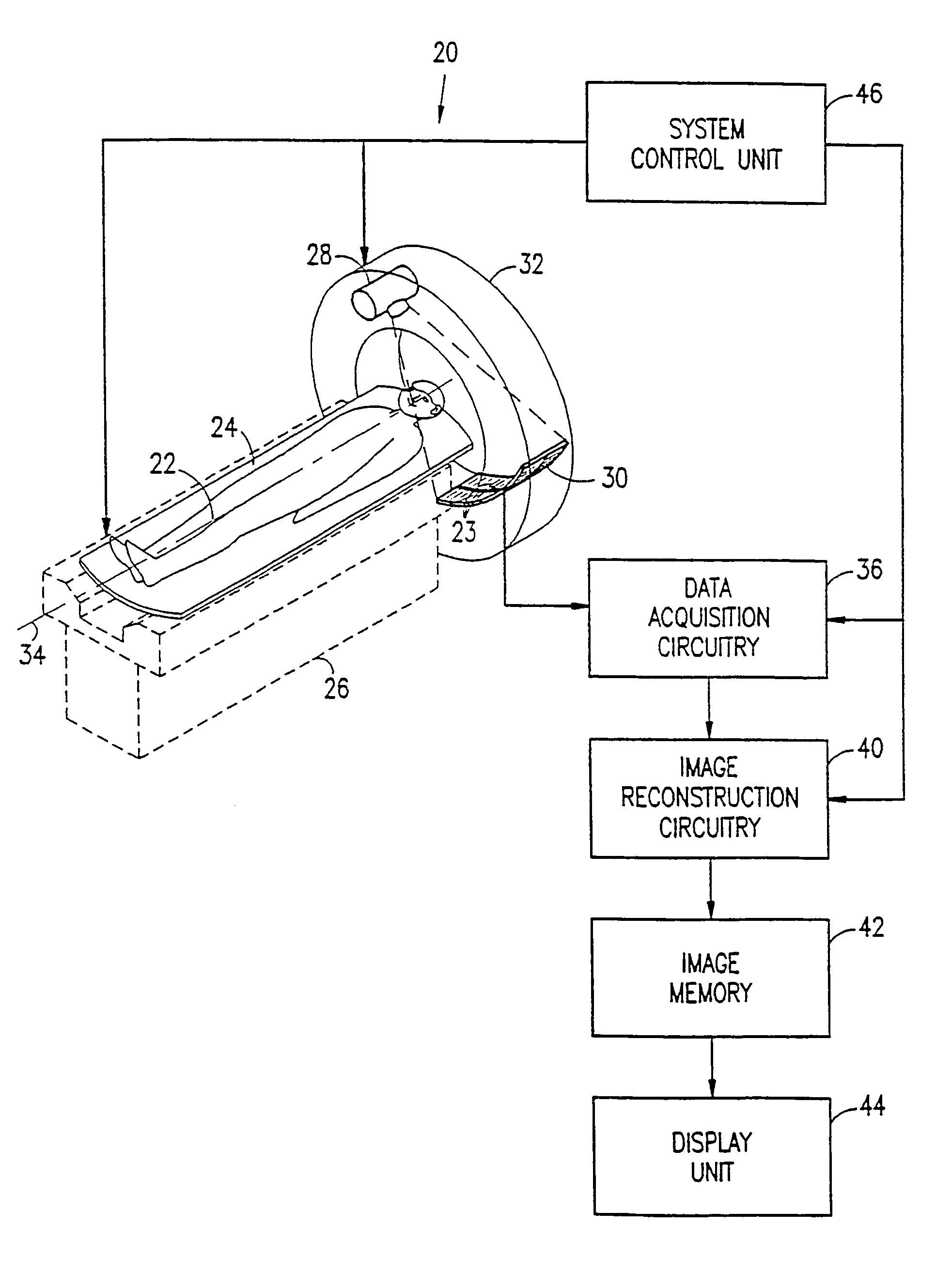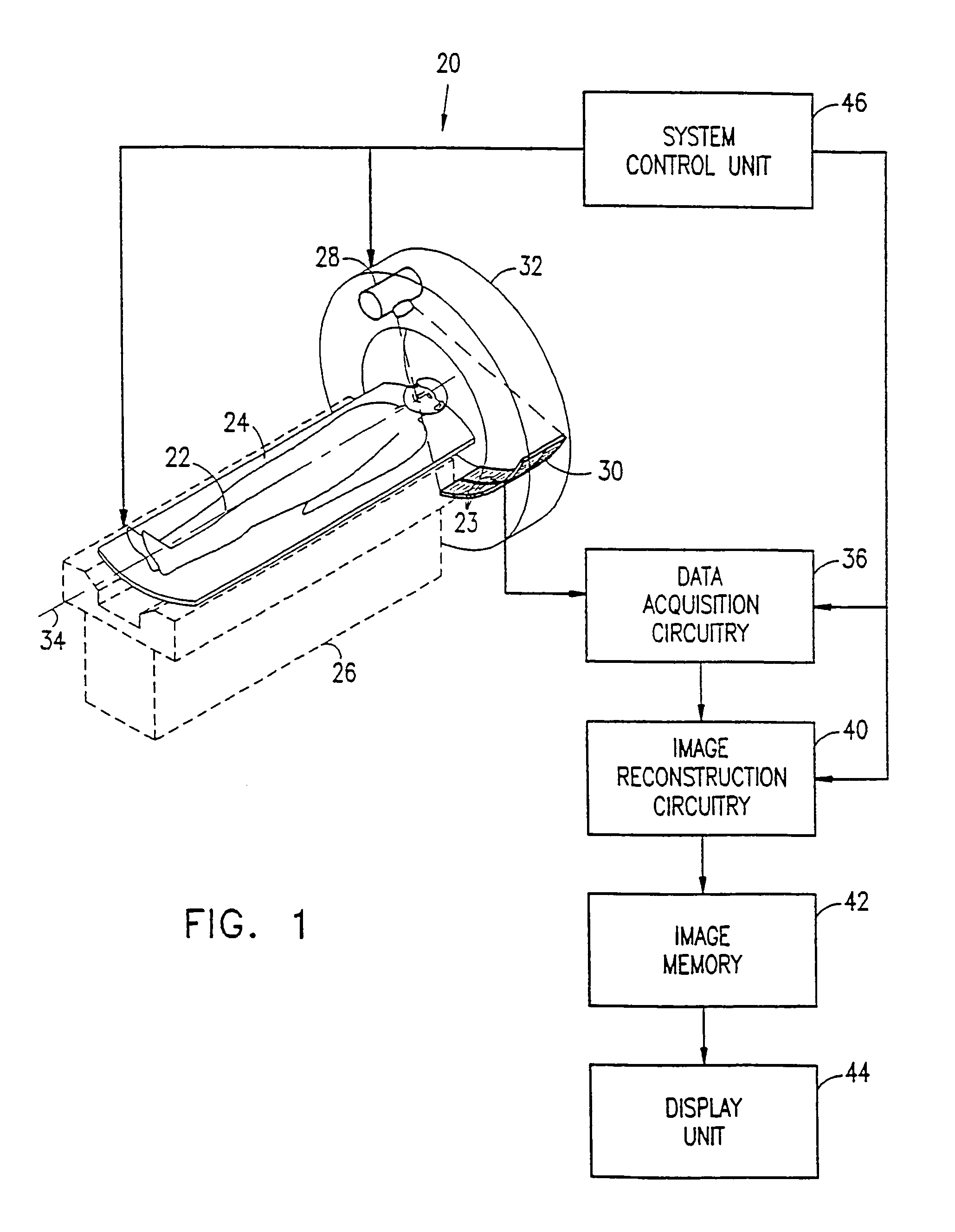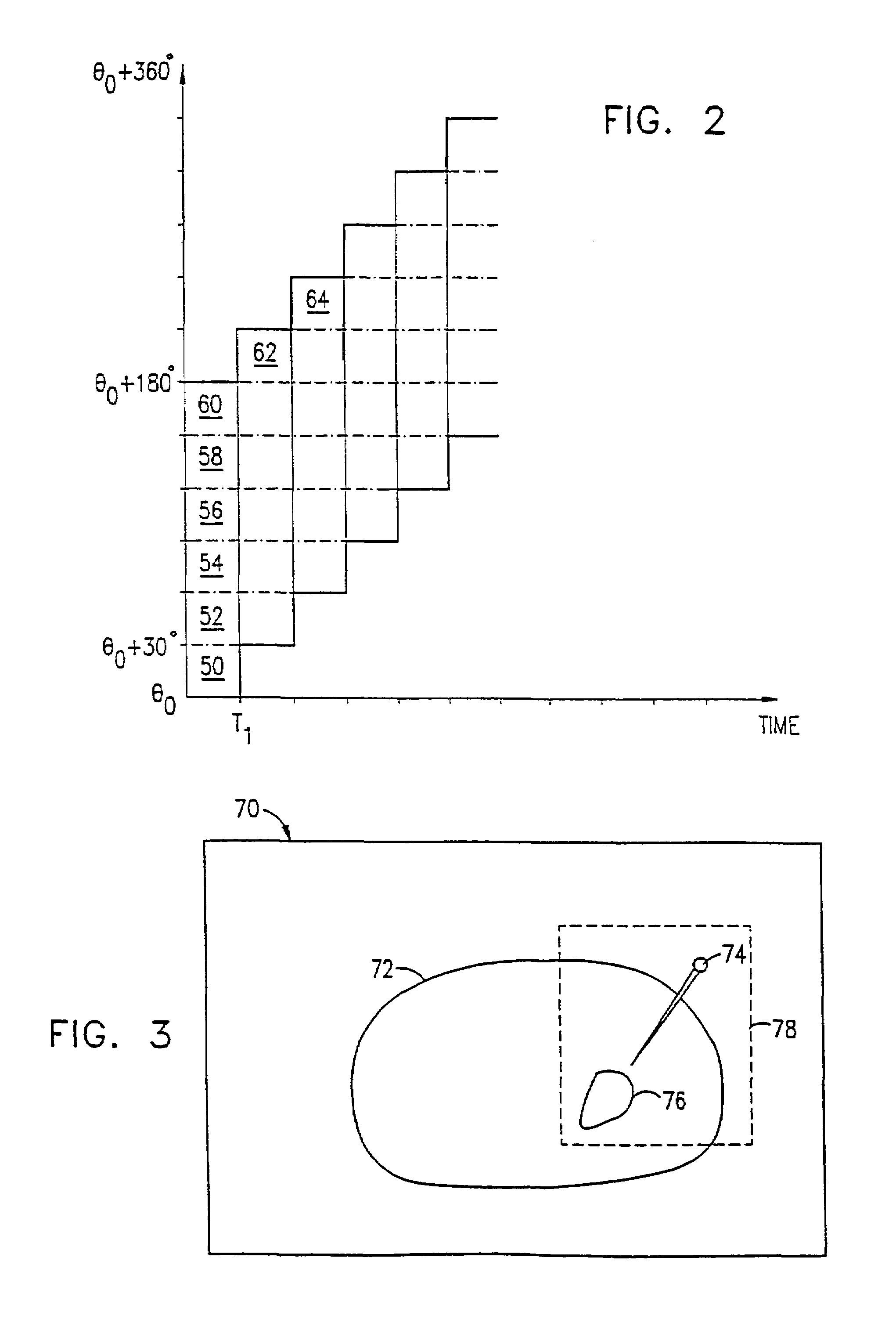Real-time dynamic image reconstruction
a real-time dynamic, image reconstruction technology, applied in tomography, ultrasonic/sonic/infrasonic diagnostics, instruments, etc., can solve problems such as disadvantages in lag, and achieve the effect of rapid image reconstruction
- Summary
- Abstract
- Description
- Claims
- Application Information
AI Technical Summary
Benefits of technology
Problems solved by technology
Method used
Image
Examples
Embodiment Construction
[0072]Reference is now made to FIG. 1, which shows a CT scanner 20, operative in accordance with a preferred embodiment of the present invention. Scanner 20 comprises a bed 24, supported by a base 26, on which bed a subject 22 lies while his body is being imaged by the scanner. Scanner 20 further comprises an X-ray tube 28, which irradiates subject 22, and a detector array 30, which receives X-rays from tube 28 and generates signals responsive to the attenuation of the X-rays in passing through the subject's body. Preferably, array 30 comprises multiple, parallel rows of X-ray detector elements 23. Alternatively, array 30 may comprise only a single row of detector elements.
[0073]Tube 28 and array 30 are mounted on an annular gantry 32, so as to revolve about subject 22. Bed 24 is advanced through gantry 32 along an axis 34, taken to be the Z-axis of a scanning coordinate system. Z-axis 34 is generally parallel to the long axis of the subject's body. Scanner 20 preferably operates in...
PUM
 Login to View More
Login to View More Abstract
Description
Claims
Application Information
 Login to View More
Login to View More - R&D
- Intellectual Property
- Life Sciences
- Materials
- Tech Scout
- Unparalleled Data Quality
- Higher Quality Content
- 60% Fewer Hallucinations
Browse by: Latest US Patents, China's latest patents, Technical Efficacy Thesaurus, Application Domain, Technology Topic, Popular Technical Reports.
© 2025 PatSnap. All rights reserved.Legal|Privacy policy|Modern Slavery Act Transparency Statement|Sitemap|About US| Contact US: help@patsnap.com



